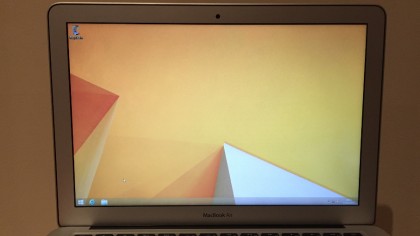How to run Windows on a Mac with Boot Camp
And the good reasons why you'd want to do so
But why would you want to run Windows on a Mac? The first reason, as previously mentioned, is simply because Windows still has such a prominent user base within the working world, and there are times when a piece of Windows-only software is needed – but as soon as you get home you want to flick back over to OS X.
The second is that, in my opinion and the opinions of many others, Apple hardware is simply superior. In every review for any Mac, be it laptop or desktop, hardware is always praised as a plus point. From the design to the trackpad – a feature that many other manufacturers are yet to nail, leading Microsoft to make alternations to the way "precision touch" devices work on Windows – Apple laptops and desktops seem to rank the highest in all reviews and measurements. It would seem that pairing Apple's hardware with Microsoft's operating system is ideal. System Preference even allows changing of the default startup disk so your Mac can boot straight to Windows every time, if you so desire.
There are downsides to this. If you have a smaller hard drive – the two lower-end MacBook Airs come with just a 128GB SSD, for example – then allocating a precious 30GB to another OS is going to be painful, especially as that leaves very little room to actually install programs on Windows so usability could be impaired.

Performance and battery issues
There are also performance and battery life issues with Windows that are not there in OS X. When Ars Technica reviewed the new Retina MacBook running Windows in Boot Camp, they found that "battery life is usually worse in Windows, something generally attributed to Apple's tighter integration between hardware and software," and this is reflected in my own tests.
The dual-booting can also be seen as a nice supplement. There is no way to load OS X onto a Windows machine – legally, at least – and so in order to get Apple's operating system you have to buy a Mac. But, when Windows is installed, you really have two PCs in one. Pound-for-pound, high-end Windows hardware is often as expensive, or even more expensive, than the equivalent MacBook – but there's only one you can run both Windows and OS X on.
There is very little downside to grabbing a copy of Windows and simply following the instructions supplied by Apple to set up a Windows PC within your Mac. If you need to run Windows-only apps, or you're attracted to OS X or the design of a Mac, then fear not: Apple has you covered.
Sign up to the TechRadar Pro newsletter to get all the top news, opinion, features and guidance your business needs to succeed!
Max Slater-Robins has been writing about technology for nearly a decade at various outlets, covering the rise of the technology giants, trends in enterprise and SaaS companies, and much more besides. Originally from Suffolk, he currently lives in London and likes a good night out and walks in the countryside.